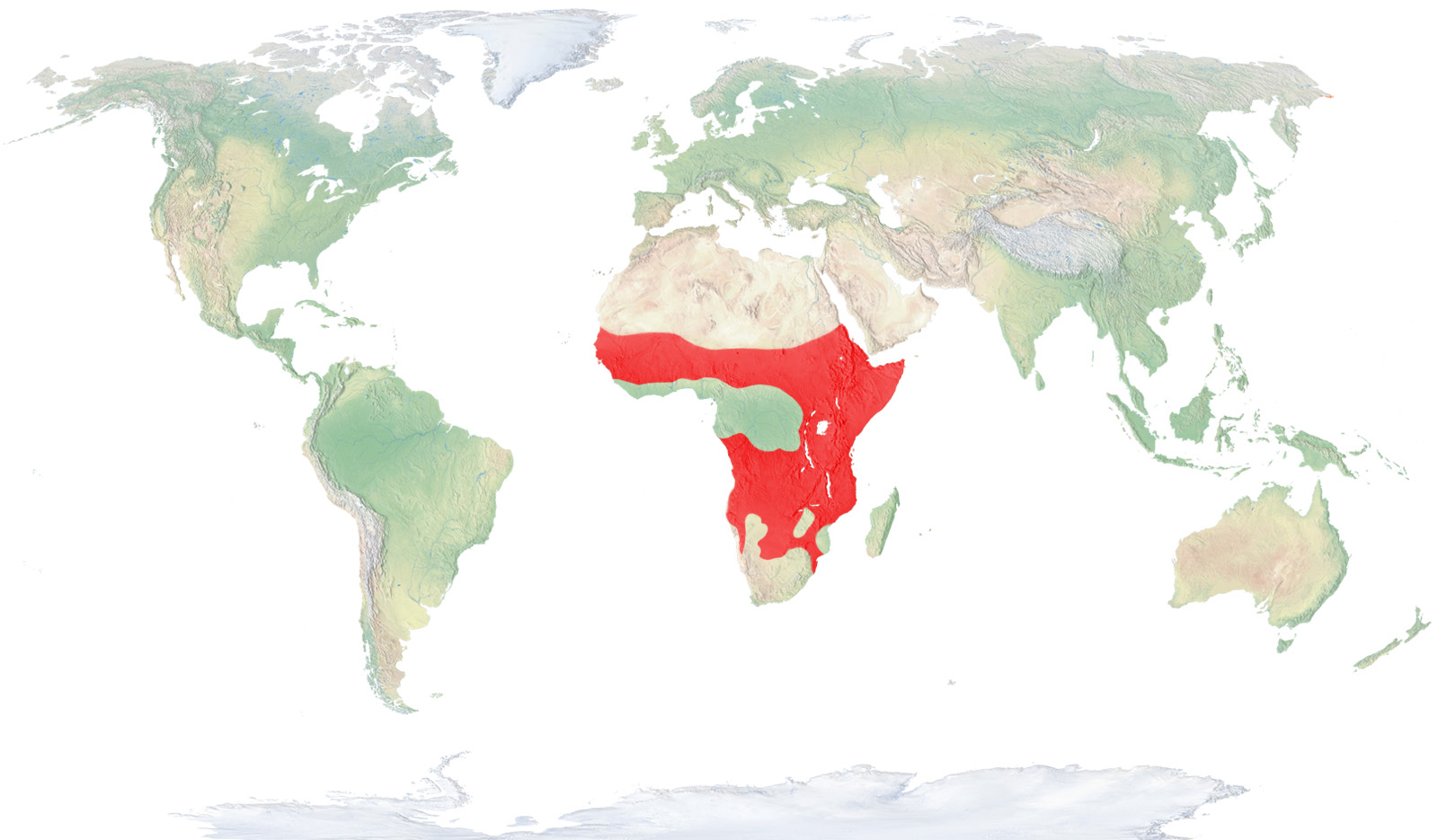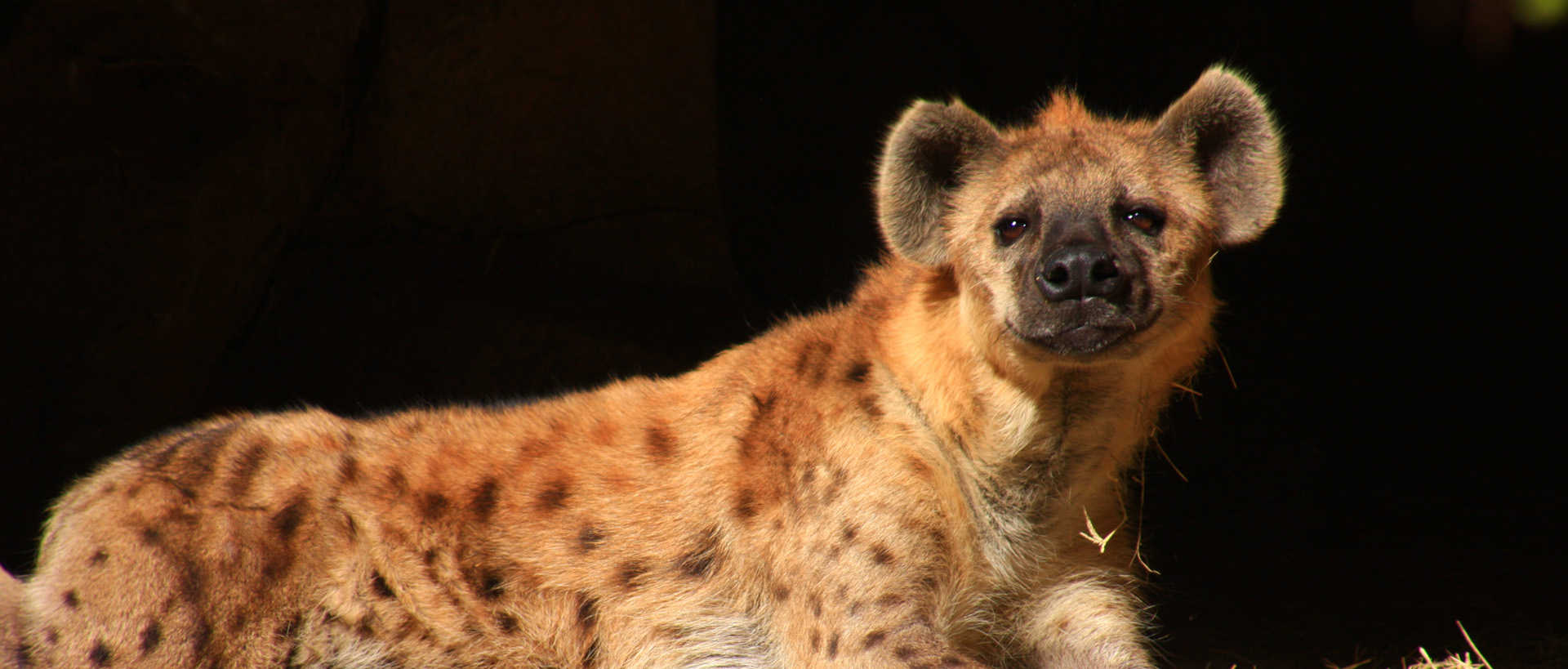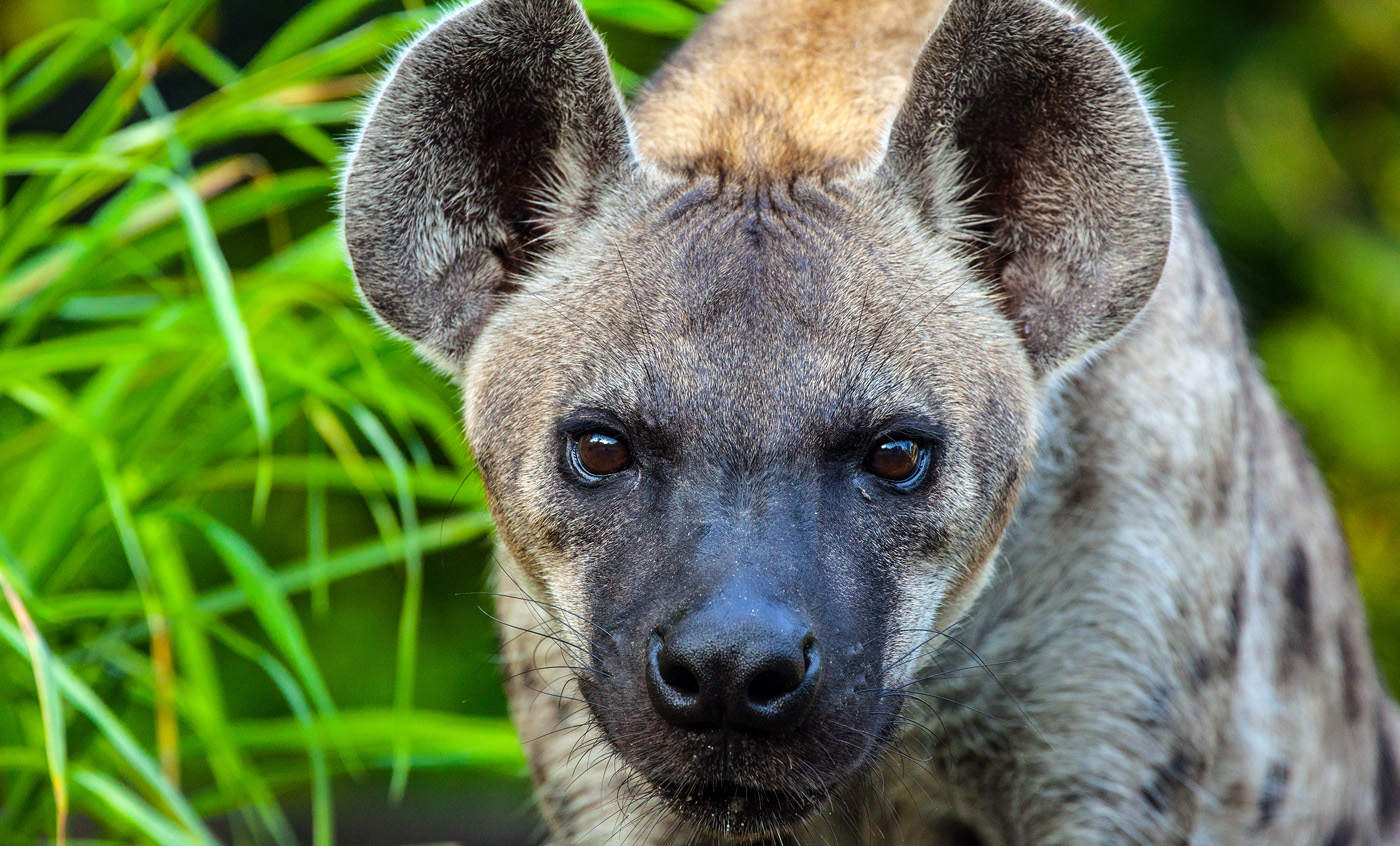Spotted hyaena
Distributed exclusively in Africa, its habitat are savannas and other open spaces of most of the continent, and it is localized more or less continuously, from southern Sahara to Namibia and the northern part of the South African Republic, except in deserts and in the tropical rainforests of the basin of the Congo river.
Breeding program
Natural habit
Although it is best known for being a carrion eater, the spotted hyena is a powerful predator that preys in group and can capture considerably large animals. Its distribution spans along a great part of Africa in southern Sahar, where it dwells in all kinds of habitats, except for dense rainforests and deserts.

- Distribution / Resident
- Breeding
- Wintering
- Subspecies
Risk level
- Extint
- Extint in the wild
- Critically endangered
- In Danger
- Vulnerable
- Near threatened
- Minor concern
- Insufficient data
- Not evaluated
Taxonomy
Physical characteristics
Biology
Reproduction
Biology
The spotted hyena, with a weight that can exceed 80 kg, is the largest species of the hyaenidae, a family of the carnivorous order characterized for having their front legs slightly longer than the rear ones, a short and thick snout, big eyes and ears, powerful jaws and strong and developed molars, that denote their carnivorous diet. In the case of spotted hyenas, such molars are specialized in grinding big bones and rip hard textures, that other animals are not able to eat nor digest.
It lives in all kind of habits, except for dense rainforests and deserts.
It is a very adaptable and opportunistic animal that can feed on zebras, reptiles, ostrich eggs, warthogs, impalas, young giraffes, buffaloes or hippos, although their favourite preys are gazelles, zebras and gnus.
One of the most important characteristics of this species is that both sexes’ appearance is very similar, even their genital organs, for females’ clitoris is so developed that looks like a penis, and it even has a bag that resembles the scrotum of the males. For this reason, many African people believe that hyenas are hermaphroditic animals.
Spotted hyenas do not reproduce seasonally and can mate at any time of the year, although they are more prone to do so during the wet season. Gestation can vary considerably, although the median is 110 days, and usually two cubs are born, although births of three or even four cubs have been documented.
It lives in family groups of up to thirty animals, which are usually led by an adult female. In some places especially rich in potential preys, such as the crater of the Ngorongoro in Tanzania, groups can reach up to eighty animals. These more or less related clans, defend their territory against other clans of hyenas by marking the limits with secretions from the anal glands, urine or excrements.
With nocturnal and crepuscular habits, they dig their dens or use the ones of they live in subterranean dens that are dug by themselves or in the ones of the aardvark or other digger animals. As social species, it emits a series of different vocalizations, the best known of which is some kind of repetitive barking that vaguely resembles human laughter.
Despite of the traditional image of this species, of an animal that merely feeds on the remains left by the authentic hunters of the savanna, such as lions, cheetahs or leopards, all the field studies carried out at their natural habitat prove that almost 70 % of the preys are captured by these intelligent predators, that hunt in group and that, in many occasions, are pillaged by lions, who take advantage of the hunting abilities of hyenas.
Although it is still found commonly in certain areas of its large distribution area, the populations nowadays decrease in many regions, as they are directly hunted by humans, who kill them by shoot them, setting traps or even by poisoning them.
The reason hyenas are hunted by humans is because they are considered a scourge of domestic cattle, who is often attacked by hyenas, and because it constitutes a serious competitor in the hunt of wild animals. These conflicts, however, occur as a result of human pressure, for the loss of their habitat caused by human settlements and agriculture and livestock is the reason of the decrease of wild animals on which this active predator preys.




